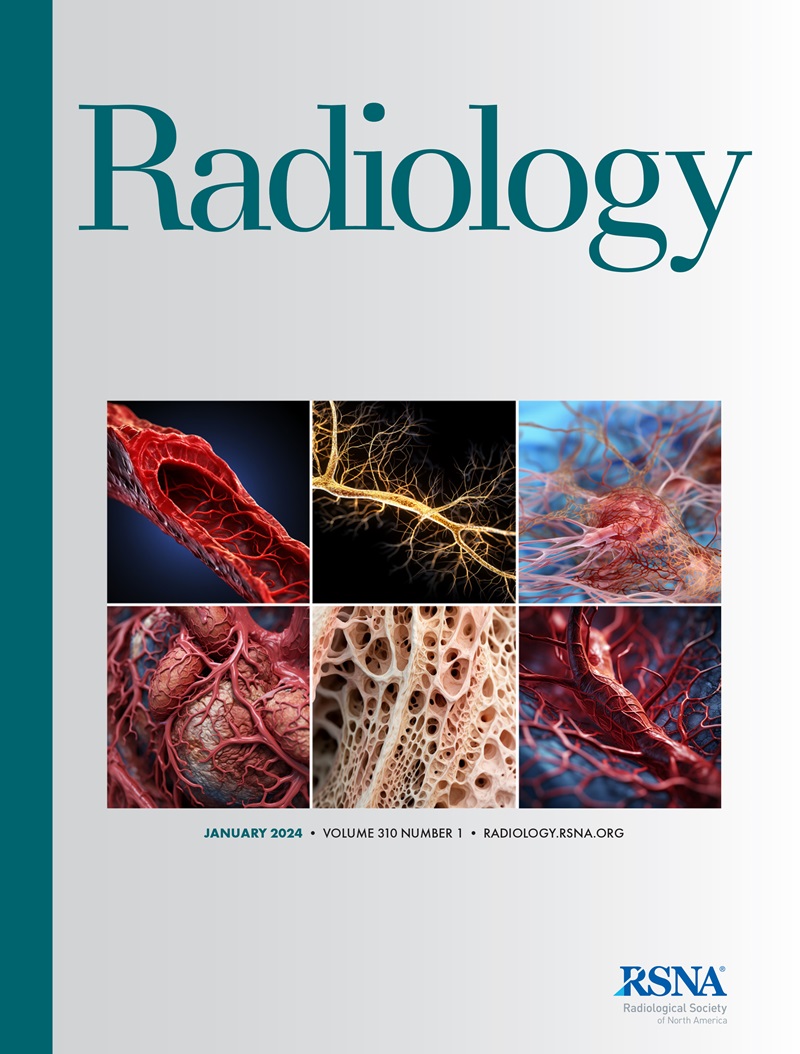求助PDF
{"title":"Diagnostic Accuracy of CT for the Detection of Hepatic Steatosis: A Systematic Review and Meta-Analysis.","authors":"Maryam Haghshomar, Dominic Antonacci, Andrew D Smith, Sarang Thaker, Frank H Miller, Amir A Borhani","doi":"10.1148/radiol.241171","DOIUrl":null,"url":null,"abstract":"<p><p>Background CT plays an important role in the opportunistic identification of hepatic steatosis. CT performance for steatosis detection has been inconsistent across various studies, and no clear guidelines on optimum thresholds have been established. Purpose To conduct a systematic review and meta-analysis to assess CT diagnostic accuracy in hepatic steatosis detection and to determine reliable cutoffs for the commonly mentioned measures in the literature. Materials and Methods A systematic search of the PubMed, Embase, and Scopus databases (English-language studies published from September 1977 to January 2024) was performed. Studies evaluating the diagnostic accuracy of noncontrast CT (NCCT), contrast-enhanced (CECT), and dual-energy CT (DECT) for hepatic steatosis detection were included. Reference standards included biopsy, MRI proton density fat fraction (PDFF), or NCCT. In several CECT and DECT studies, NCCT was used as the reference standard, necessitating subgroup analysis. Statistical analysis included a random-effects meta-analysis, assessment of heterogeneity with use of the <i>I</i><sup>2</sup> statistic, and meta-regression to explore potential sources of heterogeneity. When available, mean liver attenuation, liver-spleen attenuation difference, liver to spleen attenuation ratio, and the DECT-derived fat fraction for hepatic steatosis diagnosis were assessed. Results Forty-two studies (14 186 participants) were included. NCCT had a sensitivity and specificity of 72% and 88%, respectively, for steatosis (>5% fat at biopsy) detection and 82% and 94% for at least moderate steatosis (over 20%-33% fat at biopsy) detection. CECT had a sensitivity and specificity of 66% and 90% for steatosis detection and 68% and 93% for at least moderate steatosis detection. DECT had a sensitivity and specificity of 85% and 88% for steatosis detection. In the subgroup analysis, the sensitivity and specificity for detecting steatosis were 80% and 99% for CECT and 84% and 93% for DECT. There was heterogeneity among studies focusing on CECT and DECT. Liver attenuation less than 40-45 HU, liver-spleen attenuation difference less than -5 to 0 HU, and liver to spleen attenuation ratio less than 0.9-1 achieved high specificity for detection of at least moderate steatosis. Conclusion NCCT showed high performance for detection of at least moderate steatosis. © RSNA, 2024 <i>Supplemental material is available for this article.</i></p>","PeriodicalId":20896,"journal":{"name":"Radiology","volume":"313 2","pages":"e241171"},"PeriodicalIF":12.1000,"publicationDate":"2024-11-01","publicationTypes":"Journal Article","fieldsOfStudy":null,"isOpenAccess":false,"openAccessPdf":"","citationCount":"0","resultStr":null,"platform":"Semanticscholar","paperid":null,"PeriodicalName":"Radiology","FirstCategoryId":"1","ListUrlMain":"https://doi.org/10.1148/radiol.241171","RegionNum":1,"RegionCategory":"医学","ArticlePicture":[],"TitleCN":null,"AbstractTextCN":null,"PMCID":null,"EPubDate":"","PubModel":"","JCR":"Q1","JCRName":"RADIOLOGY, NUCLEAR MEDICINE & MEDICAL IMAGING","Score":null,"Total":0}
引用次数: 0
引用
批量引用
Abstract
Background CT plays an important role in the opportunistic identification of hepatic steatosis. CT performance for steatosis detection has been inconsistent across various studies, and no clear guidelines on optimum thresholds have been established. Purpose To conduct a systematic review and meta-analysis to assess CT diagnostic accuracy in hepatic steatosis detection and to determine reliable cutoffs for the commonly mentioned measures in the literature. Materials and Methods A systematic search of the PubMed, Embase, and Scopus databases (English-language studies published from September 1977 to January 2024) was performed. Studies evaluating the diagnostic accuracy of noncontrast CT (NCCT), contrast-enhanced (CECT), and dual-energy CT (DECT) for hepatic steatosis detection were included. Reference standards included biopsy, MRI proton density fat fraction (PDFF), or NCCT. In several CECT and DECT studies, NCCT was used as the reference standard, necessitating subgroup analysis. Statistical analysis included a random-effects meta-analysis, assessment of heterogeneity with use of the I 2 statistic, and meta-regression to explore potential sources of heterogeneity. When available, mean liver attenuation, liver-spleen attenuation difference, liver to spleen attenuation ratio, and the DECT-derived fat fraction for hepatic steatosis diagnosis were assessed. Results Forty-two studies (14 186 participants) were included. NCCT had a sensitivity and specificity of 72% and 88%, respectively, for steatosis (>5% fat at biopsy) detection and 82% and 94% for at least moderate steatosis (over 20%-33% fat at biopsy) detection. CECT had a sensitivity and specificity of 66% and 90% for steatosis detection and 68% and 93% for at least moderate steatosis detection. DECT had a sensitivity and specificity of 85% and 88% for steatosis detection. In the subgroup analysis, the sensitivity and specificity for detecting steatosis were 80% and 99% for CECT and 84% and 93% for DECT. There was heterogeneity among studies focusing on CECT and DECT. Liver attenuation less than 40-45 HU, liver-spleen attenuation difference less than -5 to 0 HU, and liver to spleen attenuation ratio less than 0.9-1 achieved high specificity for detection of at least moderate steatosis. Conclusion NCCT showed high performance for detection of at least moderate steatosis. © RSNA, 2024 Supplemental material is available for this article.
CT 对肝脏脂肪变性的诊断准确性:系统综述与元分析》。
背景 CT 在肝脏脂肪变性的机会性识别中发挥着重要作用。在不同的研究中,CT 在检测脂肪变性方面的表现并不一致,也没有明确的最佳阈值指南。目的 进行系统性回顾和荟萃分析,评估 CT 在肝脏脂肪变性检测中的诊断准确性,并确定文献中常用指标的可靠临界值。材料和方法 对 PubMed、Embase 和 Scopus 数据库(1977 年 9 月至 2024 年 1 月期间发表的英文研究)进行了系统检索。纳入的研究评估了非对比 CT(NCCT)、对比增强 CT(CECT)和双能 CT(DECT)检测肝脏脂肪变性的诊断准确性。参考标准包括活检、核磁共振质子密度脂肪分数 (PDFF) 或 NCCT。在几项 CECT 和 DECT 研究中,NCCT 被用作参考标准,因此有必要进行亚组分析。统计分析包括随机效应荟萃分析、使用I2统计量评估异质性以及元回归以探索潜在的异质性来源。在有数据的情况下,对平均肝脏衰减、肝脾衰减差、肝脾衰减比以及用于肝脏脂肪变性诊断的 DECT 衍生脂肪分数进行评估。结果 共纳入 42 项研究(14 186 名参与者)。NCCT对脂肪变性(活检时脂肪含量>5%)检测的灵敏度和特异性分别为72%和88%,对至少中度脂肪变性(活检时脂肪含量超过20%-33%)检测的灵敏度和特异性分别为82%和94%。CECT 检测脂肪变性的灵敏度和特异性分别为 66% 和 90%,检测至少中度脂肪变性的灵敏度和特异性分别为 68% 和 93%。DECT 检测脂肪变性的敏感性和特异性分别为 85% 和 88%。在亚组分析中,CECT 检测脂肪变性的敏感性和特异性分别为 80% 和 99%,DECT 为 84% 和 93%。针对 CECT 和 DECT 的研究存在异质性。肝脏衰减小于 40-45 HU、肝脾衰减差小于 -5 到 0 HU 以及肝脾衰减比小于 0.9-1 对于检测至少中度脂肪变性具有较高的特异性。结论 NCCT 在检测至少中度脂肪变性方面表现出很高的性能。© RSNA, 2024 本文有补充材料。
本文章由计算机程序翻译,如有差异,请以英文原文为准。


